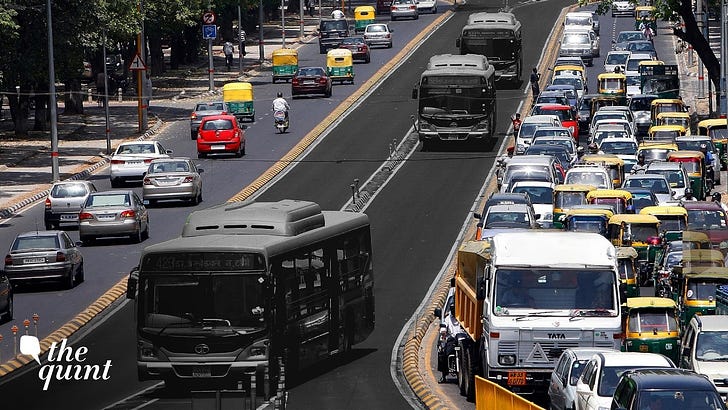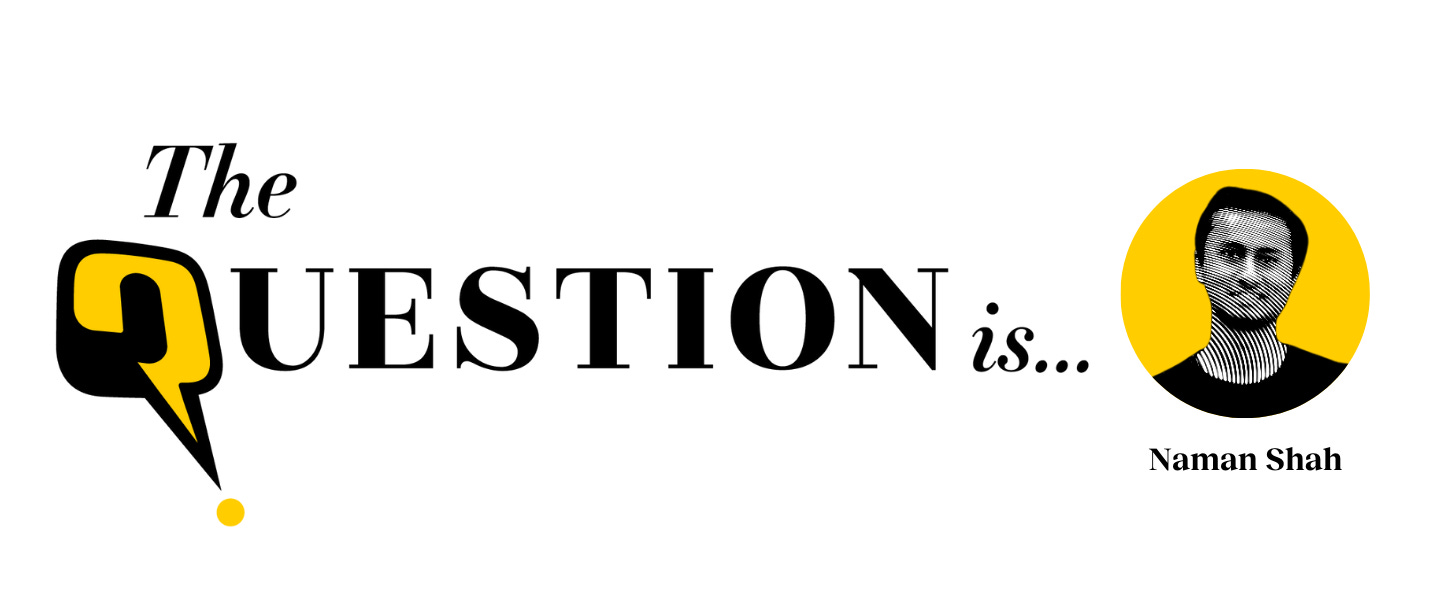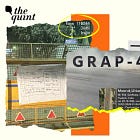The Question is... Why Do We Face Traffic Jams Every Day?
Support us as we tap into issues that are often right in front of us, but go unaddressed.
Dear Reader,
If you live in any of the metro cities in India, you can't escape the traffic jams. And this congestion problem is not limited to just tier-1 cities (yes, it's not just Bangloreans who bear the brunt of bad traffic). Even those residing in tier-2 cities are increasingly facing traffic jams during their daily commute.
So, the question is... why have traffic jams become an inseparable part of our lives?
If you look at India's vehicle ownership data, you will notice massive bumps over the past three decades. But this widespread ownership of private vehicles is only one part of the problem. The bigger (and more worrying) reason is the decay in the public transport ecosystem of Indian cities.
I spoke to three urban transport experts to better understand the issues plaguing public transport. Their insights painted a grim picture. Seriously!
"Let's take Chennai, for example. Chennai's population in the last two decades has been growing decanally around 30-35 percent, but the number of buses in the city has remained stagnant. Take Delhi for that matter. The number of buses on Delhi's roads today is actually less than what it used to be in the year 2000 — and even as the city has become such a mega, mega city, the number of buses has not increased. So effectively, we are at 1/4th of the per capita availability of public transport services," Shreya Gadepalli, one of the foremost urban mobility experts in India, told me.
While the buses in our rapidly urbanising cities have remained low, the cities took the metro plunge. "Now we have cities in India which have built a metro but the bus service is more or less non-existent," the expert added.
Now, the question that arises is... if our cities are building metros instead of buses, isn't that better?
NO.
Metro ridership data shows that seven of the 13 metro systems are struggling to touch even 10 percent of their forecasted ridership. The remaining metro systems aren't faring much better either. This is appalling for projects that cost thousands of crore.
Speaking about metros failing to draw people away from their private modes of transport, Geetam Tiwari, Chair Professor at IIT Delhi's Transportation Research and Injury Prevention Center, explained, "Only depending on metros won't solve our problem. For instance, in Bengaluru, after introducing the metro, the buses were not increased. Now the bus ridership has gone down even as the metro ridership hasn't increased. Instead, many more two-wheelers can now be seen on the road."
This doesn't mean that metros are totally impractical in our cities. But it does highlight some seriously big flaws in India's transport approach. I have painstakingly explained HOW in this deep-dive video.
In Race to Build Metro Trains, How Indian Cities Ignored Larger Mobility Issue
If you're watching this video stuck in traffic — or not, I urge you to support The Quint's work. It has taken me months of research, support from my camera crew, and guidance from my editors, to bring to light this important issue. By becoming a member*, you can help us continue to tap into issues that are often right in front of us, but tend to go unaddressed.
I'd also love to hear your thoughts on the video. Please do feel free to reach out to me at naman.shah@thequint.com.
Thanks,
NAMAN SHAH
Senior Assistant Editor, The Quint Lab
Also Read:
*Already a member of The Quint? What a star! Your support helps us do what we do better.
Want us to cover a story? Write to us at editor@thequint.com or reply to this email.




